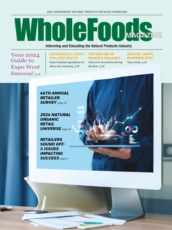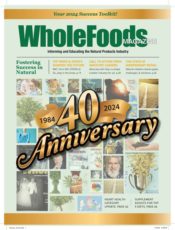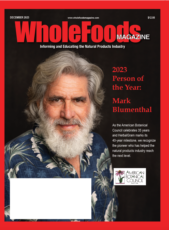
Dusseldorf, Germany was bombed into rubble by the Allies during the Second World War, but was rebuilt by the Germans into the splendid city that it is today. This week of November 2–6, 2009, amid scudding rain clouds dropping their own, less-lethal bombs, the 31st Session of the Codex Committee on Nutrition and Foods for Special Dietary Uses (CCNFSDU) met in the Museum Kunst Palast to continue its work in developing standards for global nutrition. Some 260 delegates were in attendance, comprised of various countries’ functionaries and international non-governmental organizations (INGOs) representatives. Never one to disappoint the crowd, Dr. Rolf Grossklaus returned for his final, farewell performance as the CCNFSDU Chairman.
On behalf of the National Health Federation (NHF), I had flown into town the previous Friday in order to participate in the special Saturday meeting of the CCNFSDU Working Group on Nutrient Reference Values for Non-communicable Diseases, which was the subject of previous comment (see www.thenhf.com/press_releases/pr_01_nov_2009.html). Once again, the NHF (www.thenhf.com) was the only non-profit consumer health-freedom organization with recognized status at these Codex meetings and the concomitant ability to speak out on the issues. The NHF had already submitted its written comments on Nutrient Reference Values (NRVs) for the Working Group and Committee’s consideration last September (to be found at www.thenhf.com/codex/nrv_comments.pdf), but now was the time to argue those positions.
 NRVs and Data Sources
NRVs and Data Sources
Not to be confused with Maximum Upper Permitted Limits, NRVs are nothing more than souped-up RDAs (Recommended Dietary Allowances). These are numerical values assigned to each nutrient so as to reflect most persons’ nutritional needs for that nutrient. By referring to the NRV for, say, vitamin C, the consumer is supposed to get an idea of whether he or she is getting an adequate (or in European bureaucratic eyes, an excessive) amount of vitamin C. If a consumer, for example, sees that he is getting 100% of his daily requirement for vitamin C, he will almost certainly mistakenly think that he need look no further to supplement his diet; he is, after all, getting his full needs met, even though 100% will be defined as 60 milligrams! These values are supposed to be set according to rigorous scientific evidence; but, as I have long contended, “science” at Codex levels is far more political than scientific. No, NRVs will be established politically.
So, two important agenda items covered at both the Working Groups and general Committee meetings were those dealing with vitamin-and-mineral NRVs, especially what values Codex was going to establish for them. These items also included, among other things, standards for the selection of “suitable” data sources to establish these NRVs
Religious Adulation
Yet, for a body that prides itself upon its scientific orientation, the Codex Alimentarius Commission and its various Committees have an almost child-like attachment to their parent bodies, the World Health Organization (WHO) and the Food and Agriculture Organization (FAO), both of which periodically convene “expert consultations” that result in findings religiously relied upon by the Codex bodies in establishing Codex standards. To hear it in the meetings, all a delegate has to do is incant one or more times the heavenly words “FAO Expert Consultation” or “WHO Report” and all of the other delegates are supposed to (and invariably do) immediately genuflect at the altar of scientific perfection.
The problem is that, unlike a decade ago, WHO and FAO will preselect their “expert” panels and stuff them with a narrow group of experts already predestined to make the very finding that FAO or WHO wants. The result is anything but scientific. Unfortunately, that is exactly the kind of “scientific” data that the WHO representative wants to shove down the throats of every Codex Committee. “Garbage in, garbage out” is a saying they either don’t know or, worse, do know and want to make use of.
Regardless of how outdated the FAO/WHO data might be, how biased their experts might be, how narrow-minded they might be or how limited and faulty the expert findings might be, all rational thought vacates the Codex delegates’ minds and further discussion or investigation into the science underlying such findings is immediately terminated upon mere mention of their names. The catechism has been spoken, the holy words uttered and it is truly heretical for any delegate to challenge such findings.
The Heretic
Not suffering from this fawning fascination with hierarchical orthodoxy, the NHF has repeatedly challenged this dominant paradigm by drawing the delegates’ attention to more recent scientific findings and pointing out that the FAO and WHO put their pants on one leg at a time just as we all do. We have always tried to expand the list and range of scientific bodies to which the Codex Committees could refer for expert advice. This heresy has met with harsh resistance at times.
 Yet, surprisingly, both the United States and European Community delegates are in agreement that the scientific horizons of Codex should be expanded beyond the sharp confines of FAO and WHO. These two delegates may not be as broad-minded as the NHF in that they are simply wanting to encompass their respective Institute of Medicine and European Food Safety Authority expert bodies within the Codex-recognized scientific scheme, but at least instead of body-blocking NHF as has happened in the past on other issues, they are body-blocking others.
Yet, surprisingly, both the United States and European Community delegates are in agreement that the scientific horizons of Codex should be expanded beyond the sharp confines of FAO and WHO. These two delegates may not be as broad-minded as the NHF in that they are simply wanting to encompass their respective Institute of Medicine and European Food Safety Authority expert bodies within the Codex-recognized scientific scheme, but at least instead of body-blocking NHF as has happened in the past on other issues, they are body-blocking others.
At the Working Group meeting held on Saturday, October 31st, the biggest fight of all was over the selection of data sources for NRVs, with the WHO wanting to protect its monopoly as being the sole source of acceptable data for establishing NRVs (as well as other scientific “facts”). This is a dogma that is anathema to the NHF and others since there are ample other sources of data in the world with no need to limit Codex to just relying upon WHO for its data.
Yet, after the original proposed WHO/Codex wording was placed upon the screen for all to read establishing just that monopolistic principle, no one opposed it until I spoke up in opposition and suggested alternative wording to completely eliminate the WHO monopoly of information. The U.S. delegate then suggested compromise wording that favored the NHF position, while the EC’s follow-on suggested wording trimmed the monopoly down even further in favor of the NHF position. This wording was on the way to acceptance until Canada leaped in with its own additional suggestion that diluted the NHF/US/EC compromise wording by stating that such other sources can be used only where “there is substantial new evidence that has been evaluated through systematic review.” Nevertheless, the principle of looking beyond the FAO and WHO was established; and the specific wording that “relevant and recent values that reflect independent review of science from recognized authoritative scientific bodies other than FAO/WHO could also be taken into consideration” was more easily fought and one at the general Committee level as well.
 Amazing Victory
Amazing Victory
But the real battle and amazing success took place on Tuesday, November 3rd, during the general session, when the two agenda items covering the NRVs for non-communicable diseases, including the “Proposed Draft Additional or Revised Nutrient Reference Values for Labelling Purposes in the Codex Guidelines on Nutrition Labelling,” were discussed by the Committee.
The CCNFSDU was all prepared to rubber-stamp its approval on the “Proposed Draft Additional or Revised Nutrient Reference Values for labeling Purposes in the Codex Guidelines on Nutrition Labelling,” which had been pushed by the delegation of the Republic of Korea and others.
This document was so astoundingly anti-vitamin and anti-mineral that it infuriated me and I had to restrain myself from using harsh and insulting words when it was NHF’s turn to speak. Appendix 2 of the document is only two pages, but contains already-low values for each of the vitamins and minerals listed in the Appendix (except for fluoride, which of course has an excessively high value). (To see the actual document itself, go to www.thenhf.com/press_releases/Appendix2photo11-09.pdf).
For example, the “scientific” values assigned to vitamin C were being reduced from an already-low 60 milligrams to an even-lower 45 milligrams! The NRV for magnesium was to be cut from 300 milligrams to 240 milligrams. Niacin’s value was to be chopped from 18 milligrams to 15. These were, and are, absurd numbers, based upon nutritional ignorance.
Over a one-hour period, I took the floor repeatedly to lambaste the document and to insist that its adoption would be a public-relations nightmare and make Codex the laughingstock of the world. If anything, I said, these numbers must be drastically raised. The argument swirled around the room with the NHF holding firm against comments from many other country delegations, especially Australia (which calls harsher standards “an extra bit of comfort”), all of whom thought that these numbers were perfectly normal! Had NHF not challenged the document, there would have been no sustained opposition to its passage.
Instead, I kept unrelentingly hammering at the points I had first raised and answered at every chance the counter-arguments of the document’s proponents. Finally, the Chairman, perhaps in exasperation, suggested that the Committee not advance the document to its next step because there was no consensus! This “compromise” was supported by NHF but opposed by others until, with it still hanging in the balance, the Indian delegation firmly stated its support for NHF’s position and against it advancing. India’s timing was impeccable. That was enough for the Chairman, who quickly concluded the debate and held the document back.
But for the NHF, India and also Costa Rica and Iraq, this document would have advanced towards a more final, fixed form. Now, it remains in a malleable form that will let it be corrected at next year’s CCNFSDU meeting in Chile.
Awakening
What could have been a slaughter turned into an awakening instead. Various delegations took heart from the NHF’s firm stand on these pivotal issues and lent their support, even while many remained on the sidelines or even opposed NHF. Nevertheless, there was a palpable awakening and a change of energy from this session. After this week’s victories for health freedom and health, perhaps this Museum housed fewer horrors than it could have. Still, it was a close-run thing. WF
Editor’s Note: This article is intended for information purposes only. Because state and municipal laws vary greatly, as do the circumstances of individual cases, readers are advised to contact an attorney for specific legal advice. © Scott C. Tips 2009
A graduate of the University of California at Berkeley Law School, Scott C. Tips currently practices internationally, emphasizing Food-and-Drug law, business law and business litigation, trade practice, and international corporate formation and management. He has been involved in the nutrition field for more than three decades and may be reached at (415) 244-1813 or by e-mail at scott@rivieramail.com.
Published in WholeFoods Magazine, Dec. 2009










